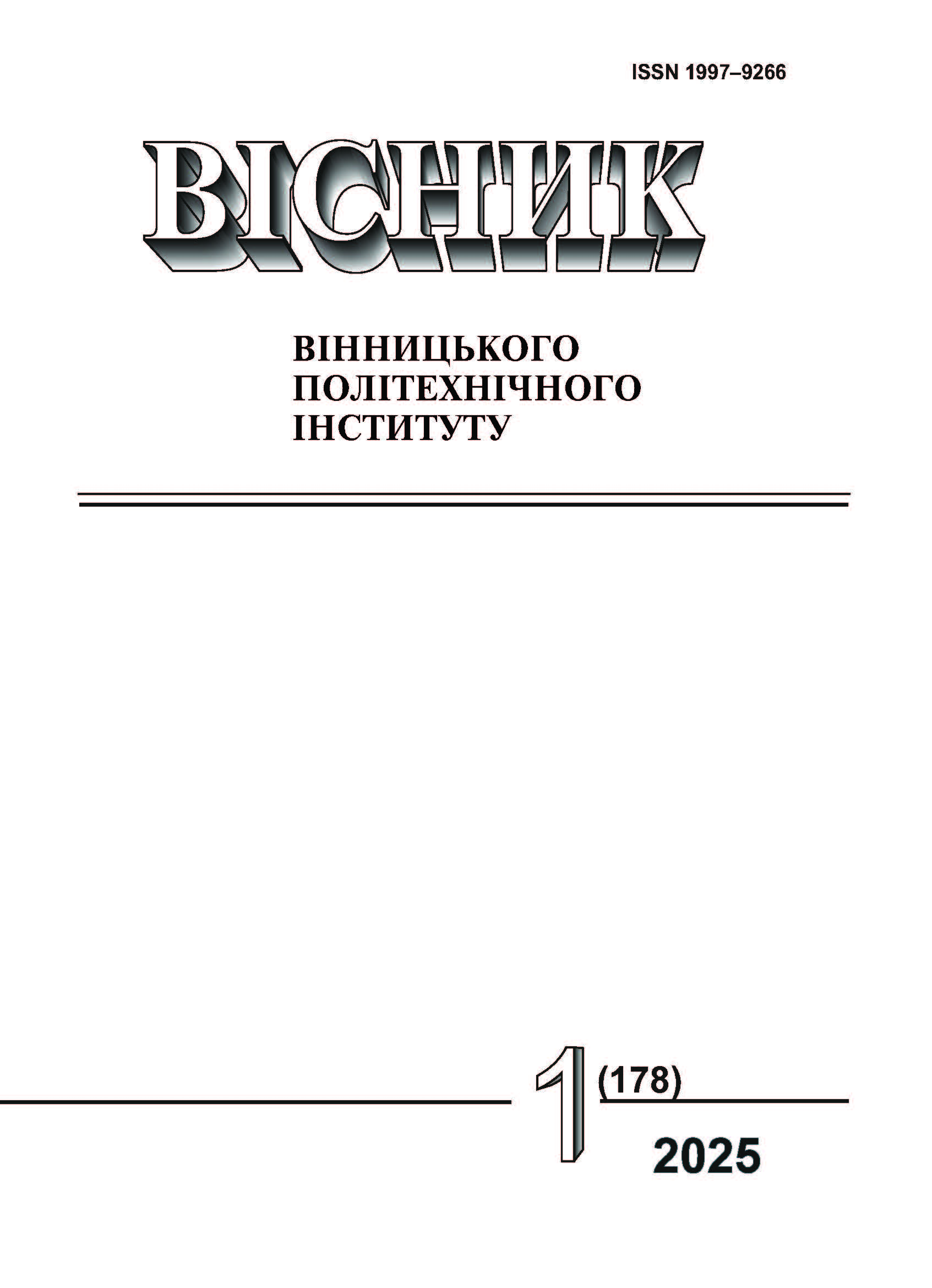Modified Algorithm for Decoding Convolutional Turbo-Codes
DOI:
https://doi.org/10.31649/1997-9266-2025-178-1-86-91Keywords:
data transmission, error-correcting code, convolutional turbo-code, decoding, correction function, simulationAbstract
At the current stage of development of the theory of error-correcting codes, a turbo-code is a promising technique, which provides the necessary error-correcting characteristics for various data transmission systems. It represents a powerful class of error-correcting codes with a unique codec structure, capable of operating effectively at high speeds in channels with low useful energy, almost completely using channel capacity by the principles of K. Shannon. The process of turbo-decoding using specialized iterative probabilistic algorithms requires significant computational resources, which can become a limitation for real digital data transmission systems. The article proposes a suboptimal modification of the turbo-decoding algorithm based on the maximum a posteriori likelihood in an iterative form, which uses the approximation of the correction function during the calculation of the correlation metrics of the trellis-diagram transitions of a recursive systematic convolutional code. The proposed function outperforms analogues in the base interval of values by statistical indicators.
The algorithm's efficiency was demonstrated during computer simulation of the work process of a digital data transmission system on random frames and multimedia data. The experimental functional dependence of the bit error rate on the signal/noise ratio in the communication channel was found and analyzed. It was determined that the modified algorithm outperforms several analogues in the terms of energy gain in communication channels with a high level of noise component, its efficiency is as close as possible to the basic algorithm, but has lower computational complexity. The article can be useful for engineers and designers of data transmission systems since it allows more efficient analysis and synthesis of turbo-codes depending on the given tasks.
References
C. Berrou, A. Glavieux, and P. Thitimajshima, “Near Shannon Limit Error-Correcting Coding and Decoding: Turbo-Codes,” Proceedings of ICC, Geneva, pp. 1064-1070, 1993. https://doi.org/10.1109/ICC.1993.397441 .
F. L. Morgos, A.-M. Cuc, and C. Grava, “Performance Analysis of Turbo Codes, LDPC Codes, and Polar Codes over an AWGN Channel in the Presence of Inter Symbol Interference,” Sensors, pp. 19, 2023. https://doi.org/10.3390/s23041942 .
X.-G. Xia, “Understanding Turbo Codes: A Signal Processing Study,” Journal of Information and Intelligence, pp. 1-13, 2024. https://doi.org/10.1016/j.jiixd.2023.10.003 .
Ю. Ю. Іванов, Р. Н. Квєтний, С. Г. Кривогубченко, і О. В. Стукач, «Особливості оцінювання параметрів процесу передавання даних із використанням турбо-кодів,» Метрологія і прилади, № 3, c. 25-32, 2017.
Ю. Ю. Іванов, «Особливості апаратно-програмної реалізації турбо-кодів: аналіз складності реалізації на цифровому сигнальному процесорі,» Вісник Вінницького політехнічного інституту, Вінниця, № 2, с. 94-101, 2016.
Yu. Yu. Ivanov, V. V. Kovtun, “Crypto Coding System Based on the Turbo Codes with Secret Keys,” ICT Express, South Korea, рр. 6, 2024. https://doi.org/10.1016/j.icte.2023.08.007 .
B. O. Bodnarenko, Yu. Yu. Ivanov, and S. M. Skuratov, “Hybrid Turbo-Decoding Method,” in MININGMETALTECH International scientific and technical conference, 2023, pp. 228-230.
P. Robertson, E. Villebrun, and P. Hoeher, “A Comparison of Optimal and Sub-optimal MAP Decoding Algorithms Operating in the log Domain,” Gateway to Globalization, IEEE International Conference on Communications, 1995, pp. 1009-1013. https://doi.org/10.1109/ICC.1995.524253 .
S. Asoodeh, “A New Constructive Approximation in Log-Map Turbo Decoder,” WSEAS International Conference on Electronics, Hardware, Wireless and Optical Communications, Cambridge, 2008, pp. 220-224.
L. Zhang, and S.-Z. Yu, “A Simplified log-MAP Turbo Decoder by Fitting Method,” Proceedings of IEEE International Conference on Advanced Communication Technology, 2005, pp. 854-857. https://doi.org/10.1109/ICACT.2005.246085.
С. В. Зайцев, «Модифікований алгоритм декодування турбокодів log-MAP з урахуванням впливу навмисних завад,» Математичні машини і системи, c. 70-79, 2015.
S. Talakoub, L. Sabeti, B. Shahrrava, and M. Ahmadi, “A Linear log-MAP Algorithm for Turbo Decoding and Turbo Equalization,” IEEE International Conference on Wireless And Mobile Computing, Networking And Communications, 2005. pp. 182-186. https://doi.org/10.1109/WIMOB.2005.1512836 .
W. J. Gross, and P. G. Gulak, “Simplified MAP Algorithm Suitable for Implementation of Turbo Decoders,” IET Journal, pp. 1577-1578, 1998. https://doi.org/10.1049/el:19981120 .
S. C. Chapra, and R. P. Canale, “Numerical Methods for Engineers (Chapter 17: Least-Squares Regression),” McGraw-Hill Higher Education, pp. 454-484, 2006.
ADSP-21065L SHARC Processor User’s Manual. [Electronic resource]. Available: https://www.analog.com/media/en/dsp-documentation/processor-manuals/37788354774923823818314265L_book_um.pdf. Accessed: 12.12.2024.
Ю. Ю. Іванов, Б .О. Боднаренко, Є. О. Звуздецький, і Ю. С. Здітовецький, «Оцінювання складності декодування згорткових турбо-кодів та блокових кодів турбо-добутків,» Вісник Вінницького політехнічного інституту, № 1, с. 51-55, 2024. https://doi.org/10.31649/1997-9266-2024-172-1-51-55 .
Downloads
-
pdf (Українська)
Downloads: 127
Published
How to Cite
Issue
Section
License

This work is licensed under a Creative Commons Attribution 4.0 International License.
Authors who publish with this journal agree to the following terms:
- Authors retain copyright and grant the journal right of first publication.
- Authors are able to enter into separate, additional contractual arrangements for the non-exclusive distribution of the journal's published version of the work (e.g., post it to an institutional repository or publish it in a book), with an acknowledgment of its initial publication in this journal.
- Authors are permitted and encouraged to post their work online (e.g., in institutional repositories or on their website) prior to and during the submission process, as it can lead to productive exchanges, as well as earlier and greater citation of published work (See The Effect of Open Access).





